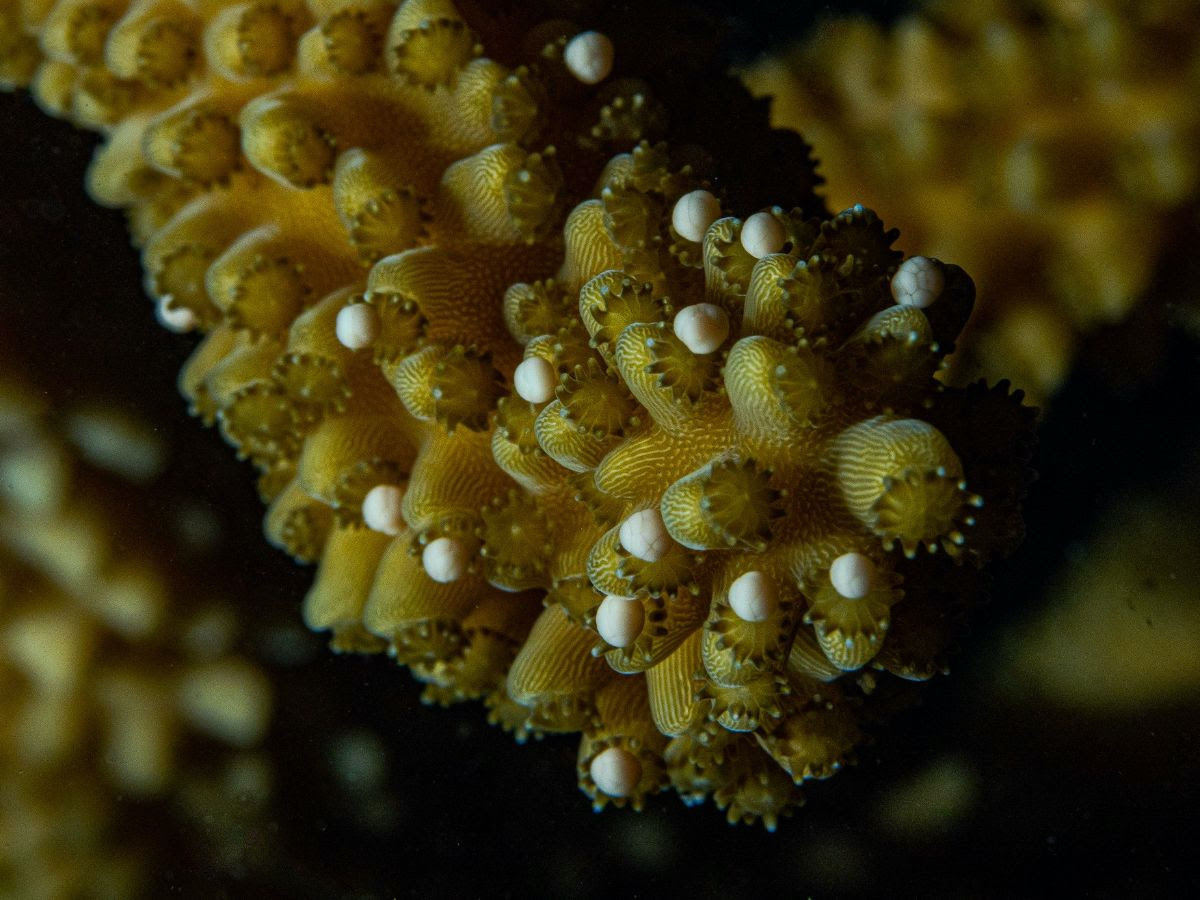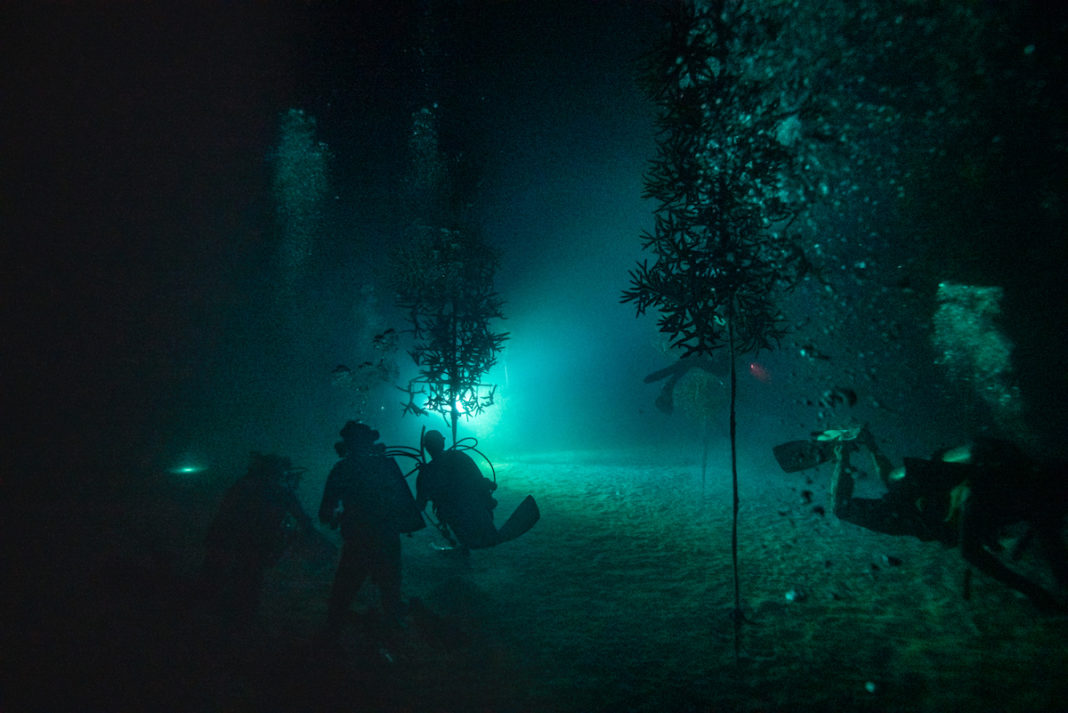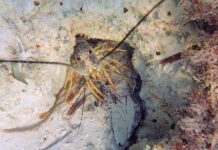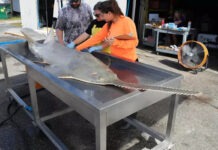Each year, just after the August full moon, scientists, divers, and coral nerds in the Keys hang out at the bottom of the ocean in the middle of the night for days on end. What they’re waiting for is the coral spawn, a natural phenomenon wherein an entire reef turns into an upside-down “snow globe” of coral eggs and sperm (gametes).
While seemingly serendipitous, spawning is actually highly-synchronized coral sex. Triggered by the lunar phases and ocean temperatures, certain coral species simultaneously release their gametes. These float to the ocean’s surface and mix to form new coral larvae. Exact synchrony and timing is critical because gametes don’t remain viable for long and are often eaten by predators. If we’re lucky, surviving larvae find old reef to stick to and grow up to become the reefs of the future.
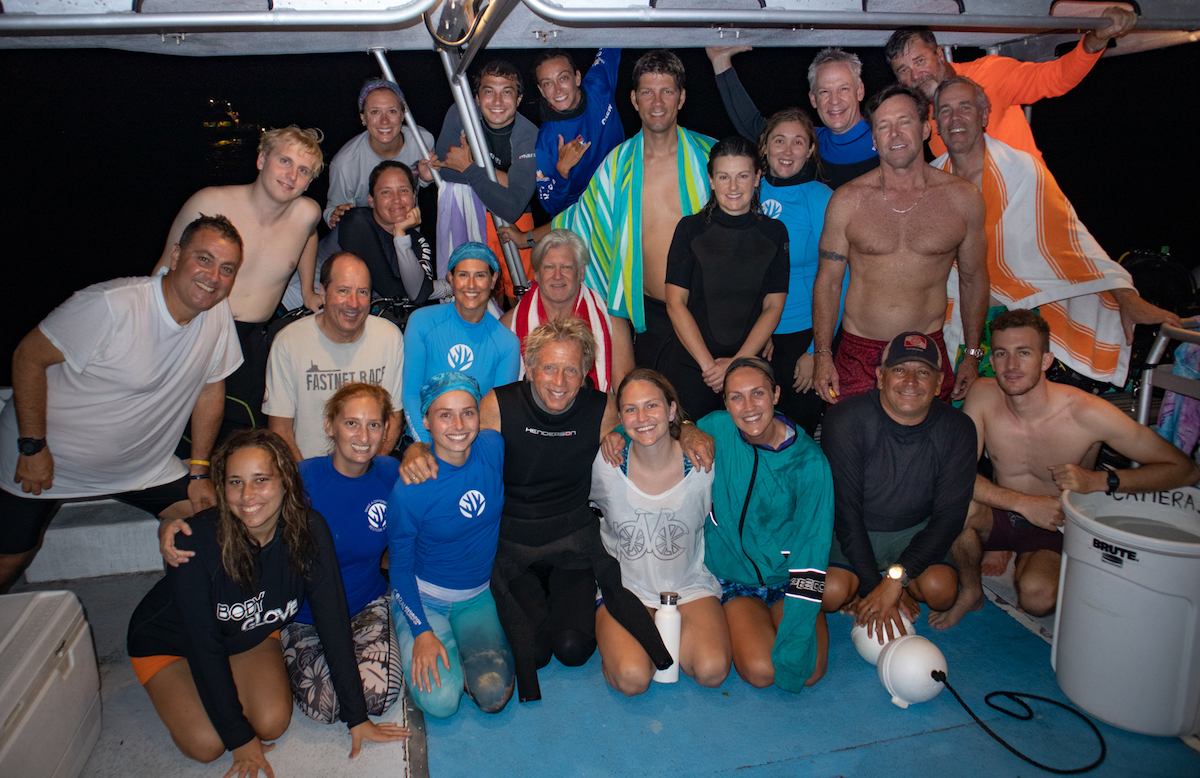
As shallow-water corals have died off around the world, their natural populations are often too far apart for gametes to meet. This is where researchers are trying to mix science with magic to save the reefs by collecting naturally-spawned gamete bundles to facilitate fertilization and larval creation in labs and aquaria.
Amelia Moura, Science Program Manager at Coral Restoration Foundation (CRF) in Key Largo, explains, “Coral spawning is our opportunity to create new genetic diversity.” CRF and its partner organizations rear successful larvae for eventual replanting, or “restoration,” onto the Florida reef tract. In this way, they hope to restore some of the lost coral cover here in Florida.
But, spawning isn’t always a guarantee. As oceans warm and water quality degrades, different reefs from around the world have either fallen out of sync or not spawned at all. Shifted ocean temperatures caused corals in the Gulf of Oman to delay spawning an entire month from one year to the next. Similarly, a recent study of corals in the Red Sea suggests that climate change and/or endocrine-disrupting pollutants from land caused their spawning synchrony to become “erratic.” The same study also concludes that out of sync spawning lowers the chances of successful fertilization and increases the potential for eventual coral species extinction due to reproductive failure.
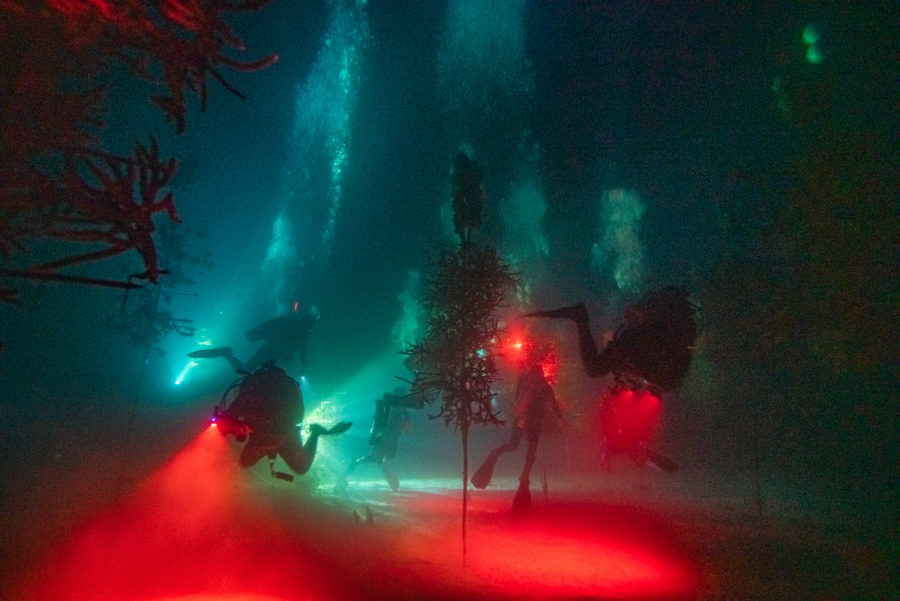
Alyssa Reed, a Coral Restoration Program Intern at CRF, summarizes why, given all this variability, spawning matters. “A successful spawn is an indicator of healthy corals.” Turns out, spawning is energy-intensive and can be disrupted by an array of factors from water temperatures to wind to pollutants in the water. So, corals only spawn if they’re happy and healthy. Reed continues, “Spawning shows they’re not just surviving, but thriving and healthy.”
Reed is referring to corals that live in CRF’s Coral Tree Nursery in Tavernier. She, along with scientists from CRF, Georgia Aquarium, and Florida Aquarium (FLAQ), spent weeks preparing for spawning. Now, on the destined Saturday and Sunday in August when the corals were predicted to spawn, they held their collective metaphorical breath waiting for the magic to happen. Joaquin Luaces, a CRF volunteer, couldn’t contain his excitement before diving into the CRF nursery. “I’ve never seen a spawn. I’m crossing my everything that they go off today!”
Further down Overseas Highway at Keys Marine Lab (KML), a different set of scientists played a similar waiting game. Instead of scuba diving to see the spawning, they prepped land-based coral raceways with CRF corals for observation and gamete collection. These scientists played “mood music,” such as Sting’s “I’ll Be Watching You” and Marvin Gaye’s “Let’s Get It On” waiting for the corals to “set” or prepare their gametes for release. Ashlee Steinberg, a grad student from Nova Southeastern University, said, “This is awesome. Hopefully I’ll see these corals grow in the lab from larval babies.”

But hours wore into days as everyone kept waiting by land and by sea. Stephen Frink, who was on board the first two nights of diving and waiting (but no spawning), smirked. “You never know with nature,” he said, packing up his dive gear. “It’s kind of awesome that it’s still unpredictable. Maybe they’ll start spawning right as we hit the dive ladder just to make us come back next year.”
At KML, they switched the soundtrack to Elvis Presley’s “Only Fools Rush In” to keep the mood hopeful when the corals were a few days late. Rachel Serafin, a coral biologist with FLAQ and team lead for the land-based spawning at KML, briefed Keys Weekly on the situation. “We expected both staghorn and elkhorn to spawn last night. There was no setting and no bundles, but we’re still hopeful. We’ll be here until they do spawn.”
A few days later and still without spawning, Steinberg, joked with Serafin about changing the music again for a little gamete-releasing encouragement. “Hey Rach, you’ve gotta play Frozen — ‘Let it Go!’,” said Steinberg.
To everyone’s delight, the corals spawned five, six, and seven days after the August full moon. Giving a hat tip to nature and the mystery behind coral sex, the CRF team concluded by saying, “As every scientist knows, you can rely on nature to be unpredictable.” While no one can pinpoint exactly what caused the delay, it did highlight how complex and monumental a task stands before coral scientists hoping to study spawning in order to save our reefs. As for what’s in store for next year? Only time, magic, and science will tell.
